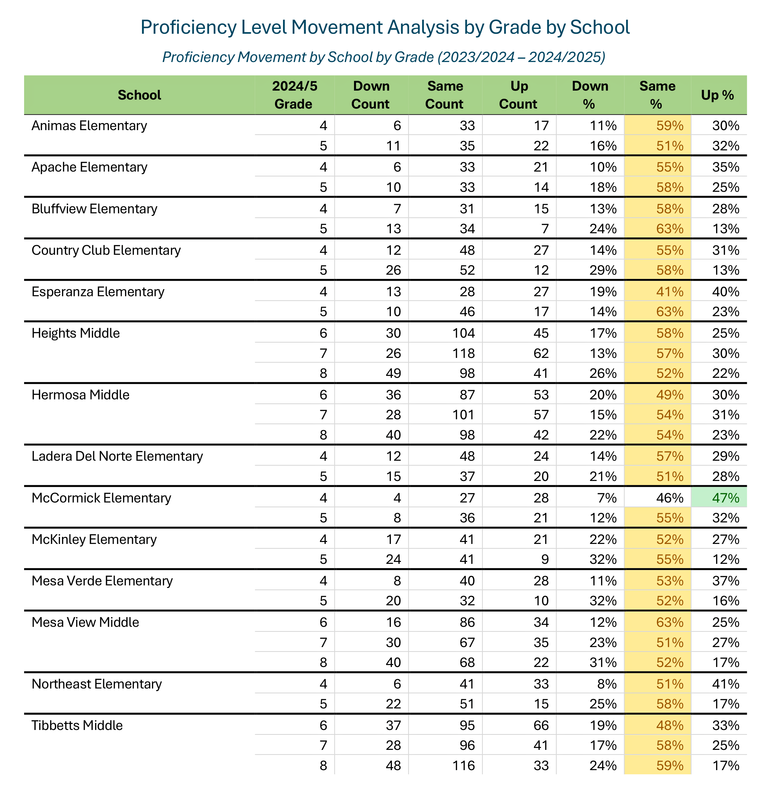Did you know that reading by fifth grade is a game-changer for a student’s future?
Reading by fifth grade unlocks the ability to tackle complex texts, sharpens comprehension, expands vocabulary, and synthesizes new ideas. Strong reading skills don’t just fuel success in language arts; they also open doors to achievement in every subject and strengthen critical thinking for years to come.
This week, Farmington Municipal Schools (FMS) began the Elementary Reading Initiative (ERI), an important project focused on helping all of our elementary students grow as readers.
Throughout October, we will be gathering information about how students are performing in reading. In November, we’ll work with Instruction Partners, a national education nonprofit, to review what we’ve learned and identify the best next steps. From there, we’ll create a plan that begins rolling out in January 2026, outlining priorities and aligning with each school’s 90-day improvement plans.
At the heart of all these efforts is one clear goal for FMS: to give every child the strong reading foundation they need to succeed in school and beyond.

In the photo: Charlotte Hansen, Managing Director of Elementary Reading, at the September 23 launch event with FMS elementary principals and assistant principals.
What this means for families:
The work will help teachers better understand student needs and adjust instruction.
Students will have the strongest language skills, considerably improving reading outcomes.
We are using the latest research and proven teaching methods to help more students reach grade-level proficiency.

On the data side:
Strong upward movement in key areas: Several schools show impressive upward mobility in both 4th and 5th grade with Animas (62%), Apache (60%), Esperanza (63%), Ladera (57%), and McCormick (79%).
Wide performance variations: Schools serving similar demographics show dramatically different outcomes, indicating teaching approaches likely have a significant impact on student success.
Elementary schools show stronger ELA mobility, but concerning 4th-to-5th grade transitions: Across elementary schools, 4th-grade classes consistently demonstrate higher upward movement (27-47%) than their 5th-grade counterparts (12-32%). This pattern suggests effective early literacy instruction in 4th grade, but challenges in maintaining or building upon these gains in 5th grade, where several schools experience significantly higher downward movement. This grade-level discrepancy points to a critical transition period that requires targeted instructional support to maintain literacy momentum before students enter middle school.
Among the four middle schools (Heights, Hermosa, Mesa View, and Tibbetts), ELA performance tends to decline as students progress through grades, with 8th grade consistently showing higher downward movement (22-31%) and lower upward mobility (17-23%) than 6th and 7th grades. This trend is most pronounced at Mesa View Middle (31% downward movement in 8th grade) and least severe at Hermosa
Middle, which maintains more consistent performance across grade levels. These patterns raise significant concerns about students' literacy preparedness for high school across all middle schools in the district.
District Priorities for School Year 2025-2026:
Support every elementary school to strengthen reading support systems so children get the right help with both prevention and intervention all the way through 5th grade.
Share stronger information with middle schools about each incoming 6th grader’s reading progress, so teachers can start supporting them right away.
Provide extra reading help in 6th grade.
Build strong, school-wide reading systems that support every student and help close learning gaps quickly.
A big shoutout to our Curriculum and Instruction team, as well as our Elementary teachers and principals, for taking on this important work. More updates to come!

The data included in this article was prepared for FMS by our partners at Level Data, a provider of K12 data management and workflow automation software. Level Data analyzed our students' performance on New Mexico’s statewide test (NM-MSSA) for grades 3–8.

